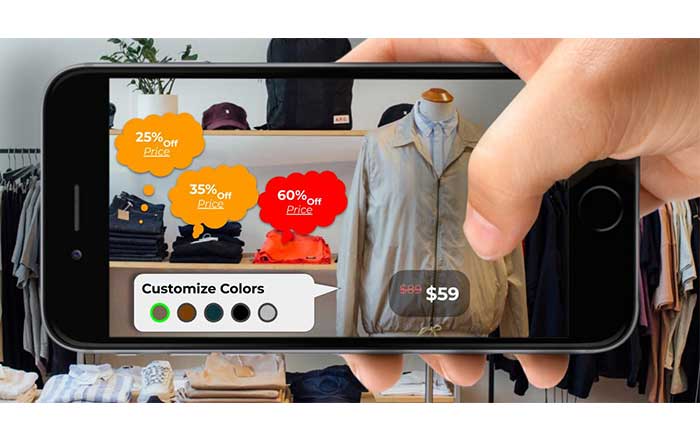Augmented Reality in Retail


In the fast-evolving landscape of retail, technological innovations continue to redefine the shopping experience. One such groundbreaking development is the integration of Augmented Reality (AR) into the retail sphere. This article delves into the transformative power of augmented reality in retail, unraveling its potential to revolutionize the way consumers interact with products and brands.
Embracing Augmented Reality: A Retail Revolution
Augmented Reality Defined
Before we delve into its applications in retail, let’s understand what augmented reality entails. Augmented Reality overlays digital information and virtual elements onto the real-world environment, creating a seamless blend of the physical and digital realms. This technology has found its way into various industries, with retail standing out as a frontrunner in adopting AR to enhance customer experiences.
The Rise of AR in Retail
In recent years, retailers have increasingly embraced augmented reality to provide customers with interactive and immersive shopping experiences. From virtual try-on experiences for clothing and accessories to visualizing furniture in one’s living space before purchase, AR is reshaping how consumers make informed decisions.
Advantages of Augmented Reality in Retail
1. Enhanced Product Visualization
Augmented reality allows customers to visualize products in their real-world context before making a purchase. This not only reduces the likelihood of returns but also boosts consumer confidence, resulting in a more satisfying shopping experience.
2. Virtual Try-Ons for Fashion
Clothing shopping has been revolutionized by AR, enabling customers to virtually try on clothes without stepping into a fitting room. This not only streamlines the shopping process but also reduces the need for physical trials, enhancing convenience and efficiency.
3. Interactive In-Store Displays
AR-enhanced in-store displays engage customers on a deeper level. Retailers can provide additional product information, promotions, and even gamify the shopping experience, creating a memorable and enjoyable visit for customers.
4. Personalized Shopping Journeys
AR technology enables retailers to offer personalized recommendations based on customer preferences and past purchases. This personalized touch adds a sense of exclusivity and fosters a stronger connection between the consumer and the brand.
Implementing AR: Best Practices for Retailers
As retailers explore the integration of augmented reality, adhering to best practices becomes paramount for success.
1. Seamless Integration with Existing Systems
Retailers should ensure that AR solutions seamlessly integrate with their existing systems, such as e-commerce platforms and inventory management. A smooth integration enhances operational efficiency and provides a cohesive shopping experience for customers.
2. User-Friendly Interfaces
The success of AR in retail hinges on creating user-friendly interfaces. Customers should be able to navigate the AR features effortlessly, ensuring a positive and enjoyable interaction that encourages continued usage.
3. Mobile Optimization
Given the prevalence of smartphones, optimizing AR experiences for mobile devices is crucial. This allows customers to access augmented reality features conveniently, bridging the gap between online and offline shopping experiences.
4. Data Security and Privacy
As with any technology, prioritizing data security and privacy is non-negotiable. Retailers must implement robust measures to safeguard customer data, building trust and confidence in the use of AR features.
The Future of Retail: A Seamless Blend of Real and Virtual
As augmented reality continues to evolve, its integration into retail is set to redefine the industry. The future promises an even more seamless blend of the real and virtual worlds, where customers can engage with products in ways previously unimaginable.
In conclusion, augmented reality in retail is not merely a technological trend; it is a transformative force reshaping the entire shopping landscape. As retailers embrace AR, they embark on a journey towards providing unparalleled customer experiences, bridging the gap between imagination and reality. The future of retail is here, and it’s augmented.





